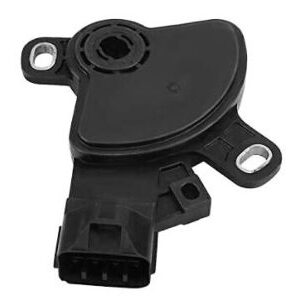Title: Monitoring Vital Signs: The Role of Oil Pressure Sensors in Cars
Introduction:
As you navigate the roads, your vehicle relies on a network of sensors to monitor its vital signs and ensure optimal performance. Among these essential components is the oil pressure sensor, a small but crucial device that plays a pivotal role in safeguarding your engine’s health. In this blog, we’ll explore the world of oil pressure sensors in cars, uncovering their function, importance, and the critical role they play in engine lubrication and performance.
What is an Oil Pressure Sensor?
An oil pressure sensor, also known as an oil pressure switch or oil pressure sender, is a sensor typically located near the engine block or oil pump. Its primary function is to monitor the oil pressure within the engine’s lubrication system and provide feedback to the vehicle’s onboard computer or gauge cluster.
Functionality:
But how does an oil pressure sensor work? As the engine operates, the oil pump circulates engine oil throughout the lubrication system to lubricate moving parts and reduce friction. The oil pressure sensor measures the pressure of the oil as it flows through the system and generates an electrical signal proportional to the pressure detected. This signal is then transmitted to the vehicle’s computer or gauge cluster, where it is displayed to the driver or used to trigger warning indicators if the oil pressure falls outside of the normal operating range.
Importance:
The oil pressure sensor plays a critical role in protecting the engine from damage due to inadequate lubrication or oil starvation. By continuously monitoring oil pressure, the sensor provides early warning of potential issues such as low oil level, oil leaks, or oil pump failure. Timely detection of these problems allows drivers to take corrective action, such as adding oil or addressing mechanical issues, before they escalate into more serious engine damage.
Key Functions of Oil Pressure Sensors:
1. Monitoring Oil Pressure: The primary function of oil pressure sensors is to monitor the oil pressure within the engine’s lubrication system and provide real-time feedback to the driver or vehicle’s computer.
2. Warning Indication: Oil pressure sensors can trigger warning lights or messages on the dashboard if the oil pressure falls below or exceeds safe operating limits, alerting the driver to potential issues.
3. Engine Protection: By detecting abnormalities in oil pressure, oil pressure sensors help protect the engine from damage due to inadequate lubrication, oil starvation, or other mechanical issues.
Maintenance and Replacement:
Proper maintenance of oil pressure sensors is essential to ensure accurate readings and reliable engine performance. Over time, oil pressure sensors may become contaminated with dirt, debris, or engine oil, leading to inaccurate readings or failure. Regular inspection, cleaning, and testing of oil pressure sensors as part of routine maintenance can help prevent issues and ensure proper function. If problems arise, such as persistent warning indicators or erratic oil pressure readings, professional diagnosis and replacement of the oil pressure sensor may be necessary to restore proper operation.
Conclusion:
In conclusion, oil pressure sensors may be small components, but their role in protecting the engine from damage is crucial. By continuously monitoring oil pressure and providing early warning of potential issues, oil pressure sensors help ensure reliable engine performance and longevity. So, the next time you hit the road, take comfort in knowing that your engine’s vital signs are being monitored by the oil pressure sensor, keeping your vehicle running smoothly and reliably.
In stock (can be backordered)
$29,137.67
Title: Monitoring Vital Signs: The Role of Oil Pressure Sensors in Cars
Introduction:
As you navigate the roads, your vehicle relies on a network of sensors to monitor its vital signs and ensure optimal performance. Among these essential components is the oil pressure sensor, a small but crucial device that plays a pivotal role in safeguarding your engine’s health. In this blog, we’ll explore the world of oil pressure sensors in cars, uncovering their function, importance, and the critical role they play in engine lubrication and performance.
What is an Oil Pressure Sensor?
An oil pressure sensor, also known as an oil pressure switch or oil pressure sender, is a sensor typically located near the engine block or oil pump. Its primary function is to monitor the oil pressure within the engine’s lubrication system and provide feedback to the vehicle’s onboard computer or gauge cluster.
Functionality:
But how does an oil pressure sensor work? As the engine operates, the oil pump circulates engine oil throughout the lubrication system to lubricate moving parts and reduce friction. The oil pressure sensor measures the pressure of the oil as it flows through the system and generates an electrical signal proportional to the pressure detected. This signal is then transmitted to the vehicle’s computer or gauge cluster, where it is displayed to the driver or used to trigger warning indicators if the oil pressure falls outside of the normal operating range.
Importance:
The oil pressure sensor plays a critical role in protecting the engine from damage due to inadequate lubrication or oil starvation. By continuously monitoring oil pressure, the sensor provides early warning of potential issues such as low oil level, oil leaks, or oil pump failure. Timely detection of these problems allows drivers to take corrective action, such as adding oil or addressing mechanical issues, before they escalate into more serious engine damage.
Key Functions of Oil Pressure Sensors:
1. Monitoring Oil Pressure: The primary function of oil pressure sensors is to monitor the oil pressure within the engine’s lubrication system and provide real-time feedback to the driver or vehicle’s computer.
2. Warning Indication: Oil pressure sensors can trigger warning lights or messages on the dashboard if the oil pressure falls below or exceeds safe operating limits, alerting the driver to potential issues.
3. Engine Protection: By detecting abnormalities in oil pressure, oil pressure sensors help protect the engine from damage due to inadequate lubrication, oil starvation, or other mechanical issues.
Maintenance and Replacement:
Proper maintenance of oil pressure sensors is essential to ensure accurate readings and reliable engine performance. Over time, oil pressure sensors may become contaminated with dirt, debris, or engine oil, leading to inaccurate readings or failure. Regular inspection, cleaning, and testing of oil pressure sensors as part of routine maintenance can help prevent issues and ensure proper function. If problems arise, such as persistent warning indicators or erratic oil pressure readings, professional diagnosis and replacement of the oil pressure sensor may be necessary to restore proper operation.
Conclusion:
In conclusion, oil pressure sensors may be small components, but their role in protecting the engine from damage is crucial. By continuously monitoring oil pressure and providing early warning of potential issues, oil pressure sensors help ensure reliable engine performance and longevity. So, the next time you hit the road, take comfort in knowing that your engine’s vital signs are being monitored by the oil pressure sensor, keeping your vehicle running smoothly and reliably.
| Warehouse | Inventory at warehouse 2 |
|---|



Get E-mail updates about our latest products and special offers.
Sensors and More is Jamaica’s ultimate online auto parts store. Established in 2020, we specialize in genuine electrical parts for Japanese, Read more…
Reviews
There are no reviews yet.